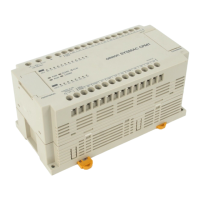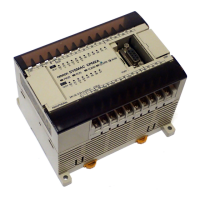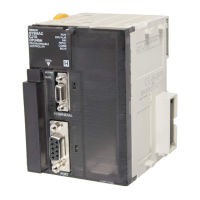000000
(179)
DATE D00100
354
Example When CIO 000000 is ON in the following example, the internal clock setting will
be changed according to the content of D00100 through D00103.
Address Instruction Operands
00000 LD 000000
00001 DATE(179)
D00100
2632
2513
9405
0003
D00100
D00101
D00102
D00103
May 25, 1994 (Wednesday)
1:26:32
PM
5-27 Special Instructions
FAL(006) and FALS(007) are used to generate error codes and signals from the
program. IORF(184) is used to refresh specified I/O words. IODP(189) is used to
output displays on SYSMAC BUS2 Slaves, I/O Control Units, or I/O Interface
Units. EMBC(171) is used to change the EM Area bank. SRCH(164) is used to
search a specified range of words for a value.
5-27-1 FAILURE/SEVERE FAILURE ALARM: FAL(006) and FALS(007)
FAILURE ALARM: FAL(006)
(006)
FAL N M
M: 1
st
message wordCIO, G, A, #, DM
N: FAL number 000 to 511
Operand Data AreasLadder Symbol
Variations
j FAL(006)
SEVERE FAILURE ALARM: FALS(007)
(007)
FALS N M
M: 1
st
message wordCIO, G, A, #, DM
N: FAL number 001 to 511
Operand Data AreasLadder Symbol
FAL(006) and FALS(007) are provided so that the programmer can output error
numbers and messages for use in operation, maintenance, and debugging.
When executed with an ON execution condition, the FAL(006) instruction will
turn ON the bit in the Auxiliary Area that corresponds to the FAL number. Bits
A43001 to A46115 correspond to FAL numbers 001 to 511. FAL number 000 is
used to reset FAL errors (see below).
Description
Special Instructions Section 5-27

